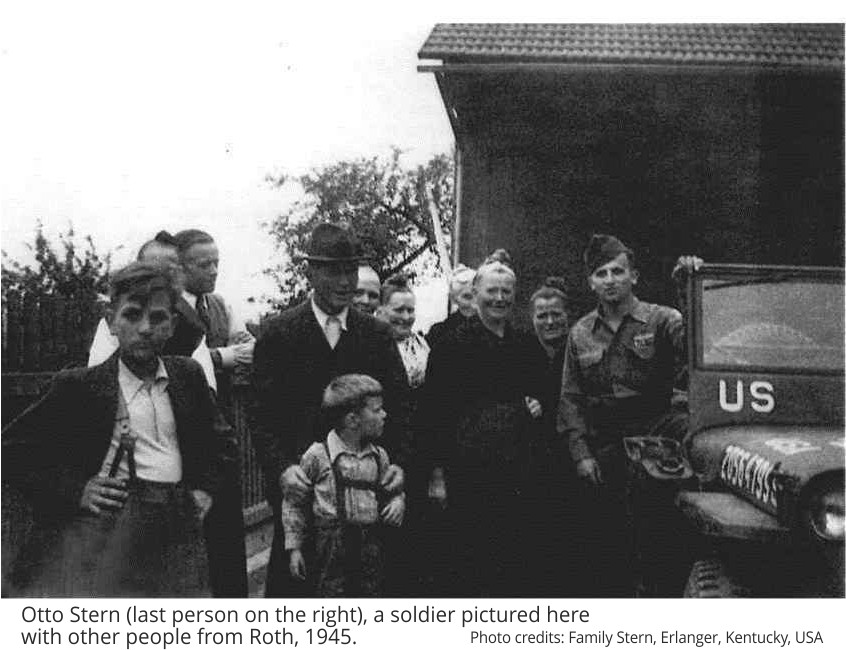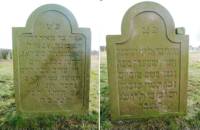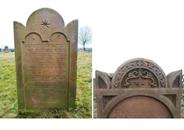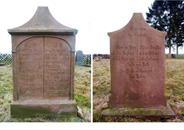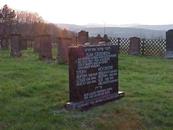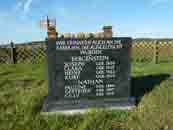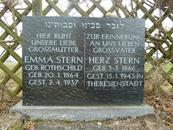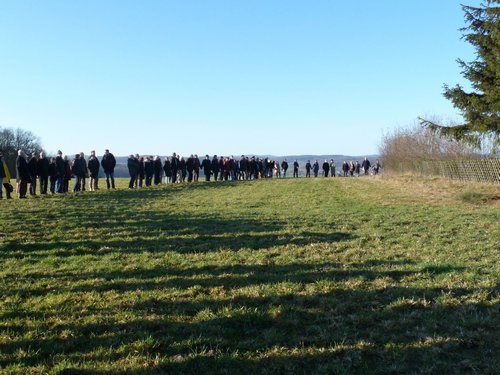by Annegret Wenz-Haubfleisch
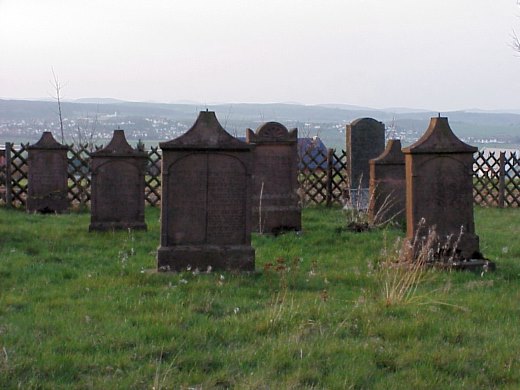
Foto: Annegret Wenz-Haubfleisch
The first record of a Jewish Cemetery in Roth is found on a map from 1766/1769.
This map indicates the area of the Juden Begräbnüs (Jewish entombment) as having a size of ¼ Acker and 3 Ruthen (about 643 m² or 769 sq. yds.)
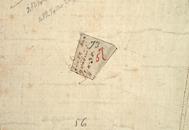
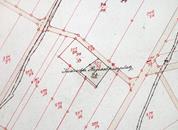
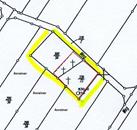
Click on the images for a larger version!
The cemetery was the only lot on an otherwise undivided piece of ground that was used as grazing land. The property owner listed in the relevant cadastre is the Village of Roth, meaning that the village owned the plot and merely allowed the Jewish Community to use the land. There are no gravestones remaining from this period. In the 19th century, the Jews from Roth, Fronhausen, and Lohra formed a single worship community and shared a synagogue and cemetery in Roth until the Jews from Fronhausen established their own cemetery on Kratzeberg in Fronhausen in 1873. At the same time, the Jews in Roth expanded their own cemetery to 1646 m² (1969 sq. yds.)
During the Nazi period many Jewish cemeteries were closed and secularized. In July 1939, the county commissioner in Marburg decreed that the Jewish cemetery in Roth should be closed. Thereafter deceased members of the Jewish Community were laid to rest in the collective cemetery in Marburg. The last Jewish person to be buried in Roth was Betty Nathan, née Stern, who died at age 81 on April 29th, 1939. She has no surviving gravestone.
The Jewish cemeteries began to be secularized in 1940. In Germany, for practical reasons of space, there is a time limit as to how long an individual grave may remain in a cemetery. This is called the Liegefrist or Ruhefrist. A Jewish cemetery must be granted an exception to this rule since the Jewish religion requires that graves are eternal: The site of a grave may not be leveled and used again.
Following the forced secularization of the Jewish cemeteries in 1940, the land of a cemetery was divided into three parts. The oldest part consisted of graves 30 years or older because thirty years was the length of the Liegefrist at that time. Graves older than 30 years had to be leveled for reuse. The second section consisted of land with younger graves. The third part was land that had been reserved for future burials.
The secularization of the cemetery in Roth was officially decreed in 1941. The three parts were sold to three adjoining neighbors. The part in which the Liegefrist was over was explicitly allowed to be leveled and the gravestones to be used for other purposes. Only special stones were to be saved.
During the Nazi regime the gravestones were indeed taken and the cemetery desecrated. Otto Stern, who was stationed as an American soldier in Germany in 1945, visited his hometown and ordered the ravaged cemetery to be restored and newly fenced in. The Jewish Cemetery is now about 891 m² (1066 sq. yds.) in size. It has been in the possession of the Landesverband der jüdischen Gemeinden in Hessen (Association of Jewish Communities in Hessen) since 1960.
Today there are 43 original gravestones. Two new ones for Emma Stern and her daughter Selma Roth were laid in 1984. The oldest headstone, marking the grave of Anschel Löwenstein from Fronhausen, is from the year 1836. There is also a stone marking the grave of Herz Stern from Roth who died in 1844.
According to official records from the 19th century, at least 43 other burials took place in this cemetery. It is improbable that the gravestones still mark the original burial sites because they are not ordered chronologically, but rather according to family with large lapses of time between the dates of passing.
The style of the headstones is by and large very simple. There are few ornaments, and the letters are usually engraved rather than raised in the stone. The main inscription is usually in Hebrew, and it is set within a carved round arch. Occasionally a headstone has two carved arches resembling the Tablets of the Ten Commandments. At the end of the 19th century, we find elements of historicism such as the depiction of a roof carried by two pillars.
In 1984, Herbert and Walter Roth, two brothers who had been able to escape to the USA, dedicated a monument to the memory of the parents and siblings of the Stern and Höchster families who had been deported to concentration camps and then murdered there between 1941 and 1945.
With donations from the next generation, the names of the murdered members of the Bergenstein and Nathan families could also be added to the back side of the memorial stone in 2010.
The cemetery was desecrated again in early January 2012. Four headstones were knocked over and 16 were vandalized with purple satanic crosses as well as one swastika. The Arbeitskreis Landsynagoge Roth (The Society for the Rural Synagogue in Roth) held a vigil in defiance of these actions on January 15th, 2012. Approximately 300 people built a human chain around the cemetery.
All pictures: Annegret Wenz-Haubfleisch
A description of the gravestones can be found on the website of the Landesgeschichtlichen Informationssystems Hessen.
The Roth cemetery is located far outside the village on the "Geiersberg" high above the Lahn valley.



